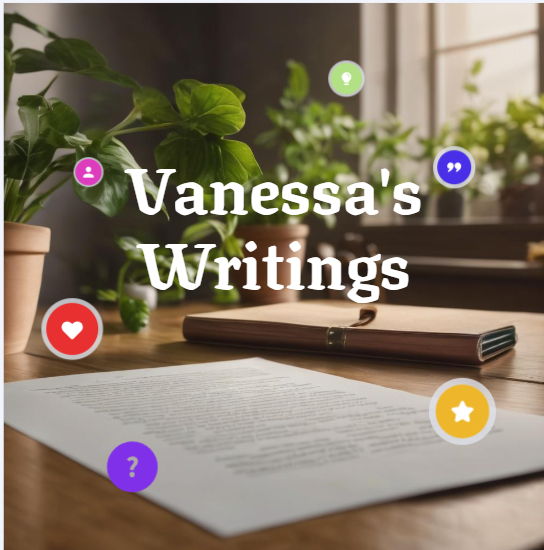TREASURE OF THE DAY: Let's Discover Interactive Images and Word Clouds! 🤠🤓
Howdy, Joyers? 👋😊
Today, I
wanna bring out my experience in today’s IT asynchronous class. 🤩The learning was so
pleasurable since I tried new things out. I got some new insights about what else
to be implemented in teaching and learning activities. It is about word cloud
and interactive image. Do you happen to know about them?
Basically,
a word cloud is an image created by a composition of words on a certain topic
or idea, and the size of each word indicates its frequency and importance. It
looks like a bunch of writing creating a shape. That’s why it is called a word ‘cloud’.
Then, an interactive image is a digital photo or illustration which has
clickable buttons, links, and audiovisual content. It means that we can add
audios, texts, and other photos to the image by adding elements which our
audience can interact with to get that extra information. That’s why it has ‘interactive’
as its name.
You can surf on the internet to find various websites to those two things. To create a word cloud on the internet, you can visit websites such as https://www.freewordcloudgenerator.com/, https://monkeylearn.com/word-cloud/, https://www.wordclouds.com/, and https://www.mentimeter.com/features/word-cloud. On the other hand, if you wanna create interactive images, try to visit these websites like https://interacty.me/products/interactive-image, https://interactive-img.com/, and https://genial.ly/create/interactive-images/. Just know that each website will have its own features, weaknesses, and special function.
Now, here’s
the thing. What can word clouds and interactive images provide for learning and
teaching activities? Are they beneficial? The answer is yes. Both word clouds
and interactive images have different roles and impacts for students, yet they
have one similarity which makes the learning activity more engaging and more
student-centered. It also provides students with a sense of exploration since
they use a device and access them.
Back to the
differences, word clouds can help students as a tool where they can share their
ideas or do brainstorming. Then, they will be able to see whether their idea is similar to their
classmates when the word they wrote seems bigger and bigger in that word cloud.
The interactive images will provide students a sense of freedom where they can do
their own autonomous learning and exploration by clicking any interactive
elements provided. Moreover, it can provide students with further information
so that they can do in-depth learning since they can assess more detailed
information from every link displayed in it. Using those two things sounds fun,
isn’t it?
Furthermore,
these two technology products will be more useful if it is included in the
teaching and learning activity. There are several ways we can do, as follows:
1 For word clouds, you can use it in every pre-instructional activity. For example, if you teach narrative text to junior high school grade 9. You can ask students triggering questions like “Do you ever read a storybook when you were a child? Would you mention any story title you have ever known? Share your idea in one word or phrase by clicking this link (you word clouds link). Moreover, I have a word cloud link as how the students’ answers may look like in that case. Here is an example I created: https://www.wordclouds.com/. Then for the technical things, I recommend you to use the word cloud in mentimeter.com because in mentimeter, you can get a link you can share with your student. In other words, it provides a multi-writer system create the word cloud because when you choose the other website, like wordclouds.com, it only can create a word cloud with one writer, and there’s no link to share which can be used for many collaborators.
2. For interactive image, you can use it to provide an interactive autonomous learning
session for your students in the whilst or main instructional activity. For
example, if you were a science teacher, and you want to teach about planets,
you can create an interactive image with planets photos. In each planet, you
put an interactive element which the students can click on, and there’s further
information about each planet. Here is a link of interactive image about planet
that I found: https://atomisystems.com/elearning/create-interactive-images-with-activepresenter/.
Moreover, I myself suggest you to create interactive images with “genial.ly”,
as it has various shapes of interactive elements and a complete enough feature
like you can add texts, videos, links, or even audios on your picture. Then,
this is my own interactive image created by using “genial.ly”: https://view.genial.ly/655c582450be7f001057aed1/interactive-image-interactive-image.
That’s all I can share today. Hope that you gain new
insights after reading it! Have a nice day!
Sources:
https://atomisystems.com/elearning/create-interactive-images-with-activepresenter/
https://www.freewordcloudgenerator.com/
https://monkeylearn.com/word-cloud/
https://www.mentimeter.com/features/word-cloud
https://interacty.me/products/interactive-image
https://genial.ly/create/interactive-images/



Comments
Post a Comment